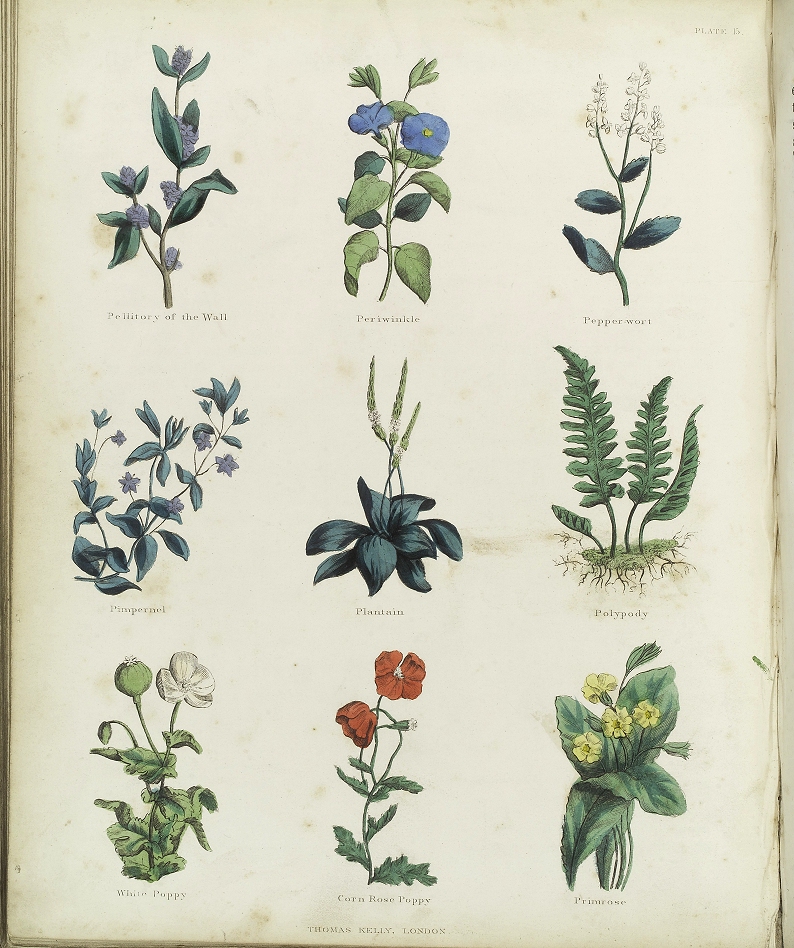- Aloe
- Greek physician Dioscorides recommended aloe externally for wounds, hemorrhoids, ulcers and hair loss. Pliny prescribed it internally as a laxative.
- Angelica (Wild Celery)
- Angelica leaf necklaces were worn as protection against illness and witchcraft. Angelica was reputed to be the only herb witches never used and its presence in a woman's garden or cupboard was successfully used as a defense against charges of witchcraft. Gilbert Anglicus' Compendium of Medicine gives the following prescription for using angelica as a cough remedy:
And if the cough is of sticky thick phlegm, give him a syrup made with horehound, the root of fennel, radish, wild celery and anise.
- Anise
- Hippocrates recommended anise to help clear mucus from the respiratory system. It was also recommended by other renowned physicians as a breath freshener, digestive aid, a cure for "hicket" (hiccups), headache, asthma, insomnia, nausea, lice and infant colic. Anise was so popular in medieval England as a spice, medicine and perfume that in 1305 Edward I placed a special tax on it to raise money to repair London Bridge.
- Apple
- Hildegard of Bingen prescribed raw apples as a tonic for healthy people and cooked apples as the first treatment for any sickness.
- Balm (Melissa)
- Lemon balm and bee balm were prescribed for nervousness and anxiety in the form of Melissa water or Eau de Melisse. Recommended for treatment of insomnia, arthritis, headache, toothache, sores, digestive problems and cramps, balm was considered to be something of a cure-all. Greek physicians recommended applying balm leaves to wounds and added the herb to wine to treat a variety of illnesses. Pliny prescribed it to stop bleeding.
- Basil
- The ancient physicians disagreed on the merits of basil. Dioscorides and Galen warned that taking basil internally would cause insanity and the spontaneous generation of internal worms. Pliny used it to treat stomach ailments. Hildegard of Bingen used basil in a concoction that included powder from a vulture's beak to treat tumors.
- Blackberry
- Blackberry was also known as "goutberry" as its most popular use was as a treatment for gout. Leaves and bark were chewed for bleeding gums, leaves were applied to the skin to sooth burns and scalds. Blackberry syrup was recommended for treatment of dysentery.
- Buckthorn
- Buckthorn became popular around the 13th century and was primarily used to purge the body of "foul humors". Buckthorn bark seeped in water produced a powerful laxative. It was also recommended for jaundice, hemorrhoids, gout and arthritis.
- Burdock
- In the 14th century burdock leaves were used to treat leprosy. Hildegard of Bingen used it to treat cancerous tumors. Burdock root was also prescribed for fever, ringworm and skin infections.
- Caraway
- Caraway seeds were recommended for the treatment of indigestion, gas and infant colic. Gilbertus Anglicus prescribed the following decoction for a syrup to treat ailments of the lungs:
Take barley water which has been strained, raisins, violets, jujube, seed of melon and gourd, wheat starch, licorice, black plums, fennel root, parsley, wild celery, anise, caraway, and make thereof a syrup. That is to say, seep all these in water until the virtue of them be in the water. Then strain it and add sugar or honey. And then set it over the fire to steep softly. Then take the white of four eggs and beat them well and add them. And always skim it until it is clear. Then take it down and strain it clean so that no dregs remain therein. Put it in a closed vessel.
- Chamomile
- Used to treat headaches, kidney, liver and bladder problems and as an aid for digestive upsets.
- Cinnamon
- Hildegard of Bingen recommended cinnamon to treat colds, flu, cancer and "inner decay and slime."
- Used for treating coughs, wheezing, shortness of breath, fever and inflammation.
- Comfrey
- Boiling comfrey root in water produced a thick paste in which cloth was soaked and then wrapped around broken bones. Internally, comfrey was used for treating respiratory and gastrointestinal problems.
Next page: Dandelion - Myrrh
Photo credits: (Related Resources) (1) Apples, Otto Wilhelm Thome, Flora von Deutschland, Germany, 1885, PD-ART, Wikimedia Commons, (2) Plants and herbs from Culpeper's The Complete Herbal, Wellcome Library on Wikimedia Commons, Creative Commons CC BY 4.0

